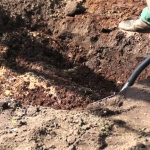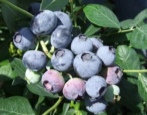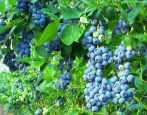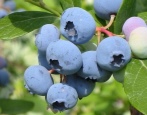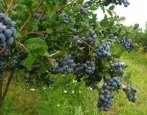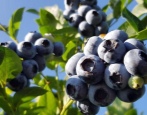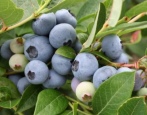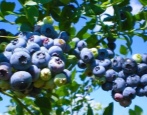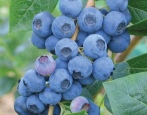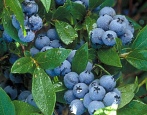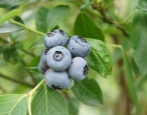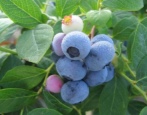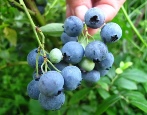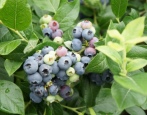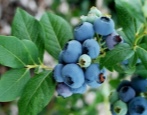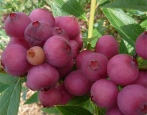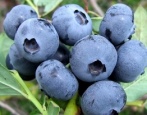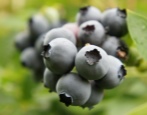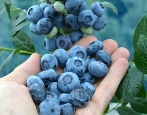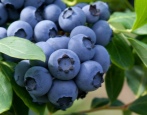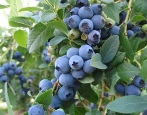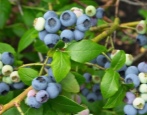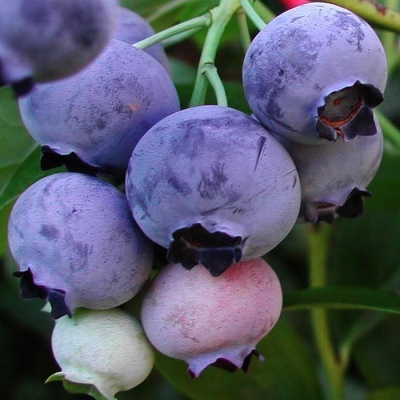
- Authors: German selection
- Name synonyms: Goldtraub 71, Vaccinium corymbosum Goldtraube 71
- Ripening terms: mid-season
- Growth type: tall
- Bush height, m: up to 2
- Taste: sugar sweet
- Yield: high
- Average yield: 7-8 kg per bush
- Fruit size: large
- Fruit shape: rounded
In recent years, the northern blueberry, which began its history in America, has become popular around the world. And this is not surprising. Indeed, in culture there are so many substances useful for the human body, vitamins, microelements, which are so lacking in spring or, say, in winter. Cultural blueberries already have quite a few varieties, among which there is a variety from Germany, Goldtraube 71.
Breeding history
This blueberry was developed back in the 50s of the XX century by the German scientist G. Geermann. The culture was obtained by the method of selection of two parental species: the tall American blueberry and the undersized narrow-leaved cultivar V. Lamarkii. The result was successful, and Goldtraube 71 quickly gained popularity, it began to be cultivated both in Germany and throughout Europe. It is also grown in Russia, but the variety is not listed in the State Register.
Description of the variety
The blueberry of the described variety is a deciduous shrub from the heather family. An adult plant has a sprawling and powerful bush that has well-developed roots. If you care for the crop carefully and properly, it can stretch up to two meters.
The oval foliage is painted in dark green tones. In autumn, the leaf plates turn red, and the bush acquires a special charm and decorative effect. It is also beautiful during flowering, when flowers-bells appear on it, which are both white and pale pink. This blueberry variety can even be grown as a container crop.
Fruit characteristics
The berries of the European blueberry are also beautiful, they are light blue in color, like most varieties, round in shape. The diameter of the fruits is 16 millimeters, and they grow in dense clusters. Moreover, one berry weighs 1.9 g.
Taste qualities
Blueberry of the Goldtraube 71 variety is a sweet-sugar variety with a pronounced aroma. It is best and most useful to eat such berries fresh. But also the berry is used as an original filling for pies, and preparations are made from it: jams, preserves.
Ripening and fruiting
The culture with European roots belongs to mid-season varieties. The ripening of the crop occurs in the second or third decade of July and continues in August. Fruiting is prolonged, lasts a whole month.
Yield
A high level of productivity is one of the advantages of this variety. From each plant, you can get an average of 7-8 kilograms of berries.
Self-fertility and the need for pollinators
The German visitor is a self-pollinated culture. The blueberry bush can even be planted alone. However, if there is an opportunity for cross-pollination with other blueberry varieties, this will increase the yield.
Growing and care
First of all, the Goldtraube 71 variety must be planted in a definitive and permanent place, since an adult blueberry plant cannot tolerate all kinds of transplants. For the growth of blueberries from Germany, those plots where no crops were grown at all last season, and the land was not cultivated, will be optimal. As for the place itself, it should be open, illuminated by the sun's rays, protected from gusts of wind. Groundwater should not be located closer than 1.5 meters from the edge of the earth.
When planting several blueberry bushes of the variety in question, they are located from north to south. The distance that separates the bushes from each other should be 1.2 m, the row spacing should be 1.5 m.It is strictly forbidden to plant blueberries Goldtraube 71 in the vicinity of other heather crops, such as, for example, cranberries.
The bushes of the plant are mainly pruned for sanitary purposes. So, in the spring, extremely thin, as well as broken twigs are removed. Upon reaching the age of 5 years, all dry, non-fruiting branches are cut off from the plant. Watering must also be taken responsibly. The plant does not tolerate a lack of moisture, but does not tolerate its excess.
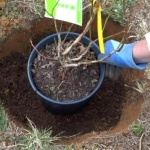
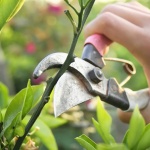
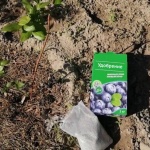
Disease and pest resistance
If the agricultural technique is performed correctly, Goldtraube 71 demonstrates decent resistance to various ailments and attacks of insect pests. But if for some reason the immunity is weakened or poor care is carried out, the culture can be affected by fungal diseases.
The most harmful insects for blueberries are the May beetle, leafworm, and aphids. But they are not the only ones. The tasty and vibrant berries attract birds.
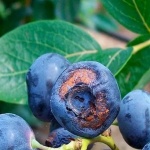
Winter hardiness and the need for shelter
For the winter period, only young growth should be prepared, which is simply covered with spruce branches. Matured and healthy blueberry bushes will perfectly withstand any winter cold, covered with a blanket of snow. If the winter has little snow, you can cover the plant with any covering material, for example, spunbond.
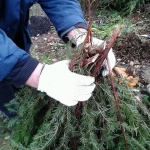
Location and soil requirements
Blueberries of German breeding are quite demanding on the level of soil acidity. Goldtraube 71 should be cultivated using an acidic substrate, while it is desirable that the pH of the soil mixture is in the range of 4.5-5.5. Not quite suitable soil in the planting pit just needs to be replaced with the desired one; for this, they take coniferous needles mixed with high-moor red peat. Other substrate options are peat-sandy, peat-loamy.
